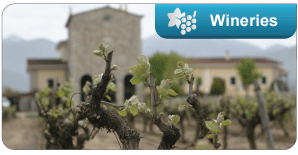Prehistoric times
Wine grape vines are self-sown in Greece, and evidence of their existence can be traced to times even beyond the Ice Age. Vine growing and wine making in Greece are age-old and are among the primordial activities of humankind in prehistoric times (4500-1050 AD). Traces of wild grape vines (vitis vinifera, ssp sylvestris) have been discovered in many parts of the country such as Thrace, Macedonia, Thessalia (Thessaly), Evia, and the Peloponnese, with some of the plants possibly dating back to the Neolithic Age. Domesticated grape vines (vitis vinifera, ssp sativa) have been grown in many regions of the Greek peninsula since the 4th millennium BC.
Archaeological finds of recent years (as published in the “Antiquity Journal”, 2007) at Philippi, eastern Macedonia, corroborate the presence of domesticated grapes in Greece as early as the second half of the 5th millennium BC. The first evidence of vinification at Philippi includes charred pips and trodden grape skins, the products of the pressing of wild as well as domesticated grapes.
In later periods of Neolithic times, winegrowing may have spread to Greece from other countries which are now known to have also engaged in winegrowing in prehistoric times, such as Mesopotamia and Egypt . Some maintain that, from those countries, the seafaring Phoenicians must have brought the vine to Greece, starting with Crete. Others argue that winegrowing activity in Greece originated in the East and thus spread to Thrace first.
During the Bronze Age, in the 2nd millennium BC which followed the Cycladic civilization that flourished in the Aegean, two of the most important civilizations of prehistoric times developed, where wine played a central role both as a tradable commodity and as a foodstuff. In the first one, Crete’s Minoan civilization, which spread to the Aegean islands around Crete, vine and wine were a main cultivation and chief export, respectively. Since then, winegrowing has continued steadily on the island where archaeological excavations have unearthed the world’s oldest wine press and vessels bearing traces of wine. Then flourished the Mycenaean civilization, based in Mycenae, Peloponnese, which dominated in southern Greece and the Mediterranean in the second half of the 2nd millennium, after the devastating eruption of the volcano of Thera (Santorini). It is during this time period (13th century BC) that historians place the Greeks joining forces in their campaign against Troy and Odysseus’ legendary return journey to the home island of Ithaca. Both events became the subject of the Homeric epics.


